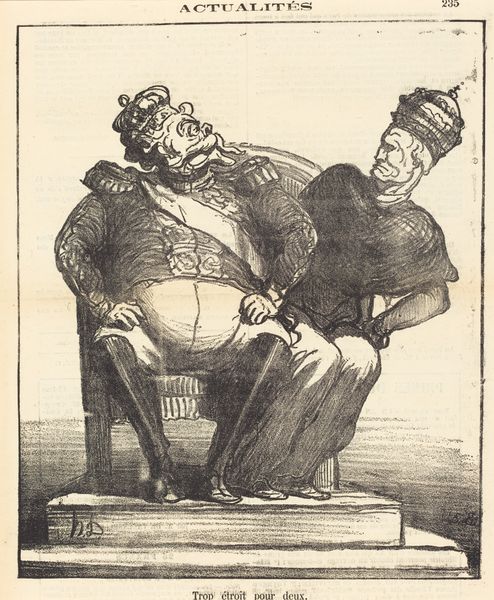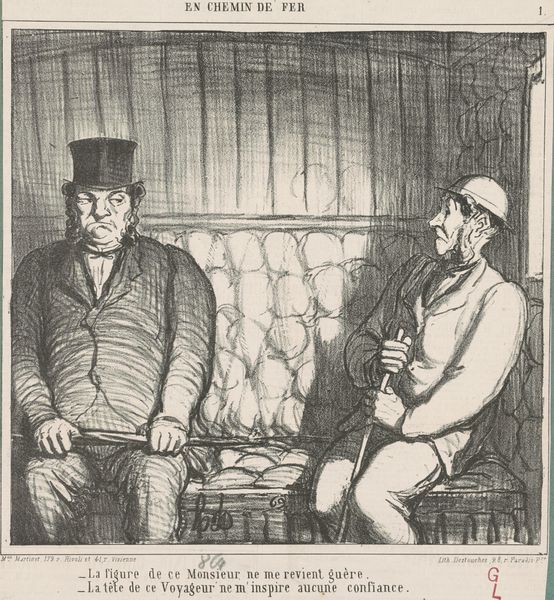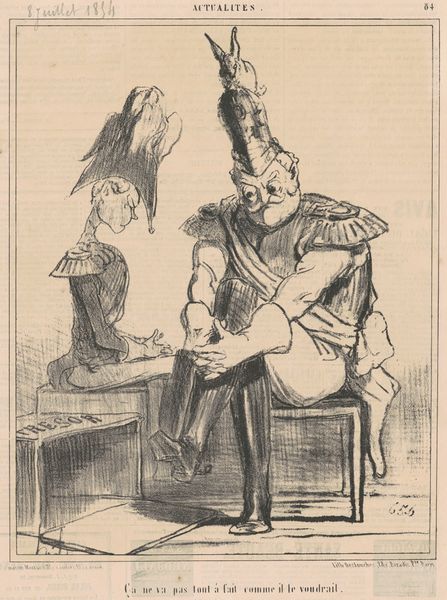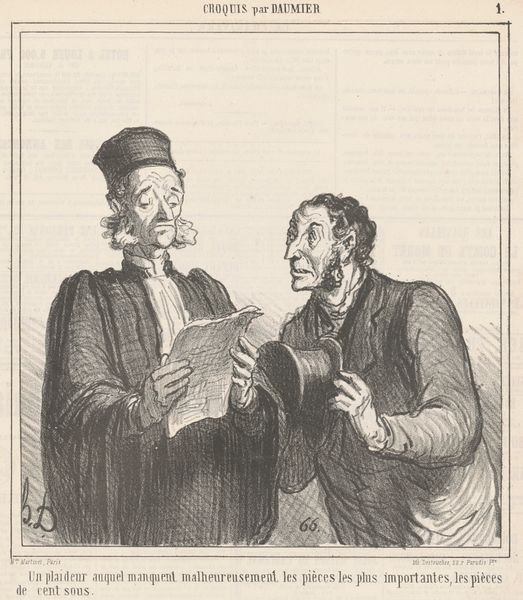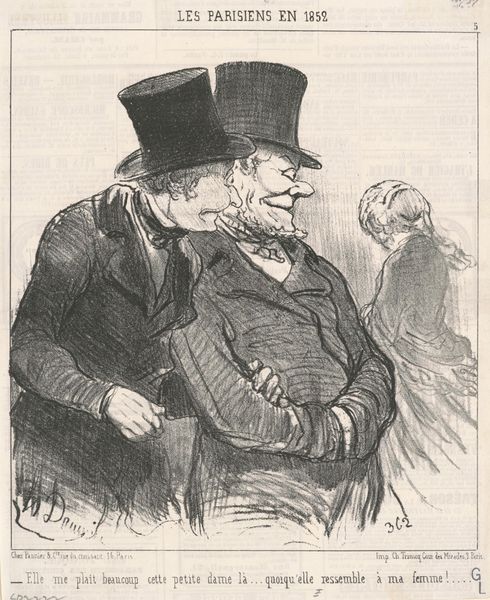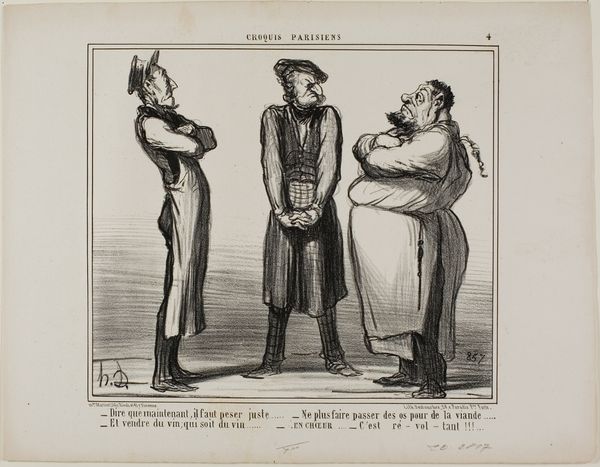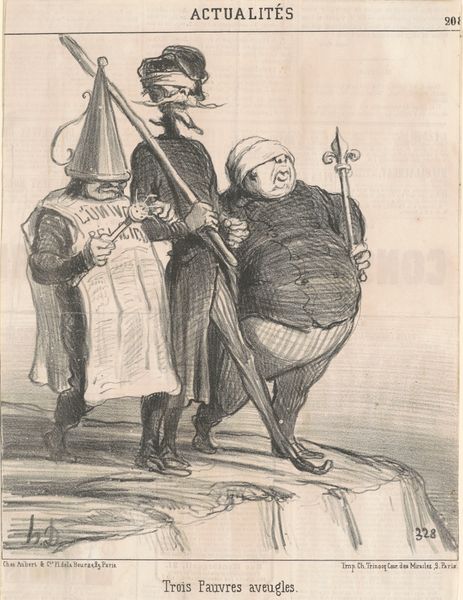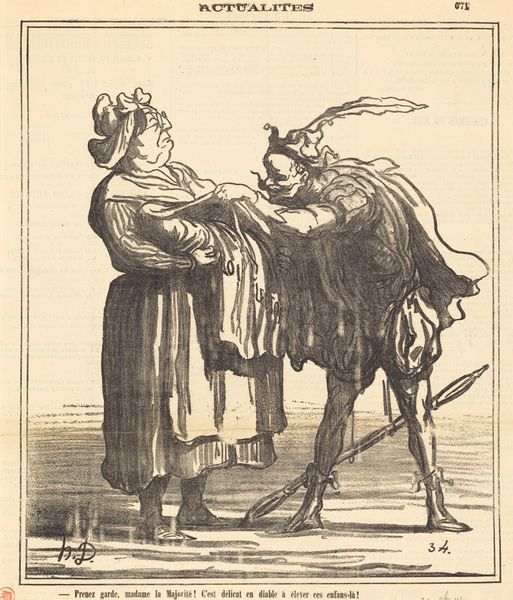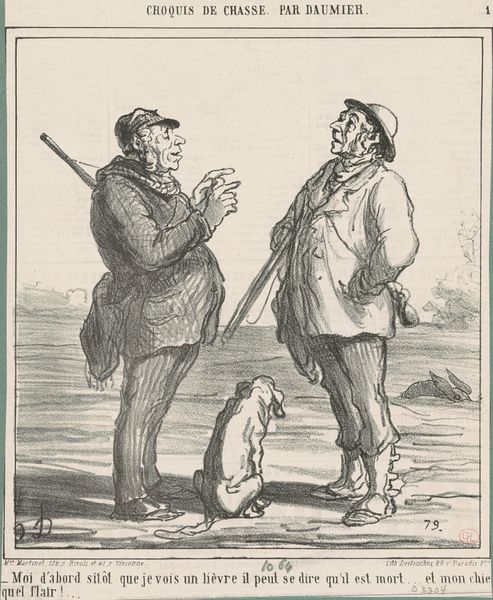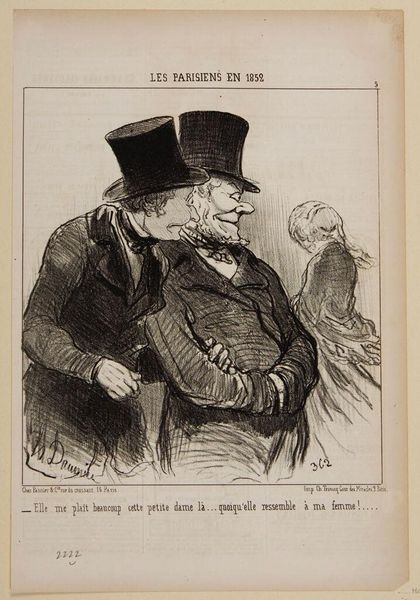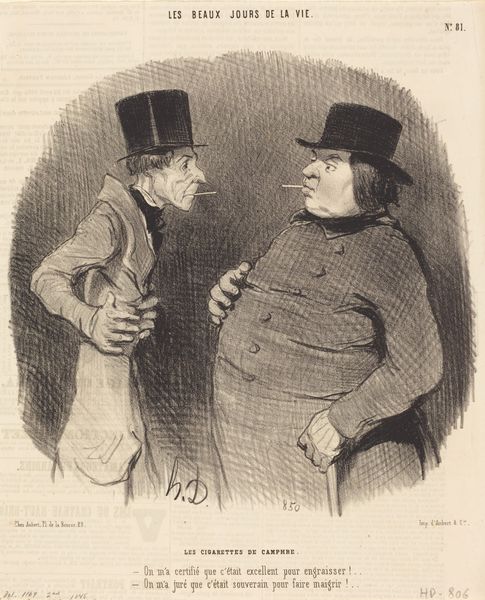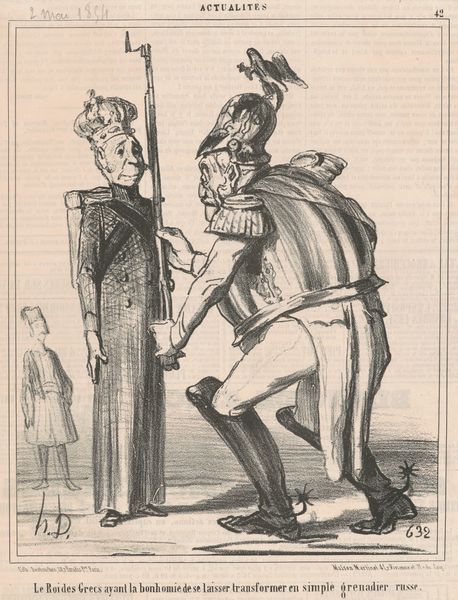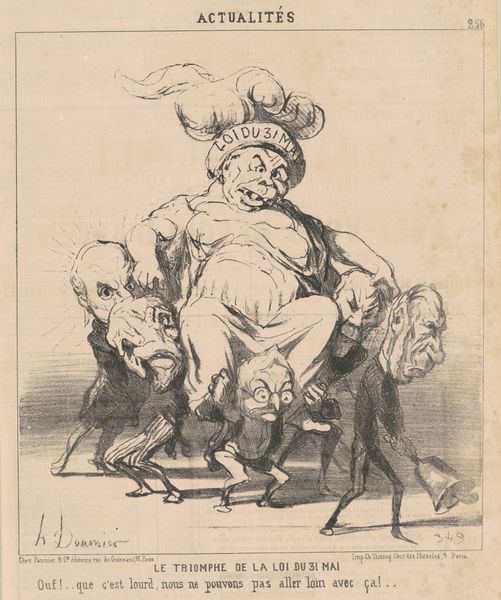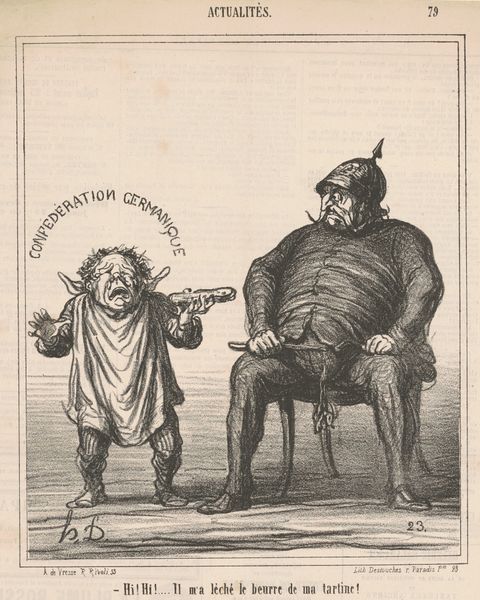
Copyright: National Gallery of Art: CC0 1.0
Curator: Honoré Daumier’s lithograph, "Trop étroit pour deux", from 1870, captures a peculiar moment between two figures vying for space. What's your initial impression? Editor: The constrained composition immediately strikes me. The artist employs a dense crosshatching technique, building up form through layers of strokes. Notice the chair: It's visually confining. The characters' weight almost seems to crush the architecture! Curator: Indeed. Daumier used his artistry as political commentary. This piece emerges in the historical context of France’s changing political landscape. France had just transitioned from the Second Empire, ruled by Napoleon III, towards the Third Republic. It mirrors Daumier’s involvement in socially relevant artistic production, aimed at influencing societal change, and specifically, perhaps, to make some commentary on the complex power dynamic. Editor: Fascinating context! But I want to focus on form. Observe the treatment of light, predominantly at the center, drawing focus onto what looks like the rotund figure on the left. Note that the artist uses darker areas, almost shadows, to convey spatial restriction, thereby, heightening the visual tension. Curator: The corpulence that Daumier gives to the central figure, which exaggerates their physique, serves as an extension to the political discourse, doesn’t it? His depiction of Napoleon III, as he’s thought to be in the picture, plays with his diminishing power as he appears to have too little space to impose himself on. Editor: I concede, but don’t forget the way line delineates the sharp profiles. The man on the right might be seated, but visually speaking he's almost as commanding in form as the sitter. See how his glare cuts through, giving that section an incredible graphic intensity? Curator: True! Their proximity in a confined space signifies the clashing ambitions of political factions, the papacy in particular. It is so characteristic of Romanticism to deal with tension, social inequalities, or in this case political and social changes! Editor: So, what began as observation on aesthetic tension brings us to an observation on human power struggles. I think that perhaps in terms of formal values, and attention to form, Daumier's political convictions find full, undeniable aesthetic realisation in "Trop étroit pour deux". Curator: Absolutely. In a sense, this lithograph provides insight into how Daumier understood politics and how he sought to visualize conflict.
Comments
No comments
Be the first to comment and join the conversation on the ultimate creative platform.
